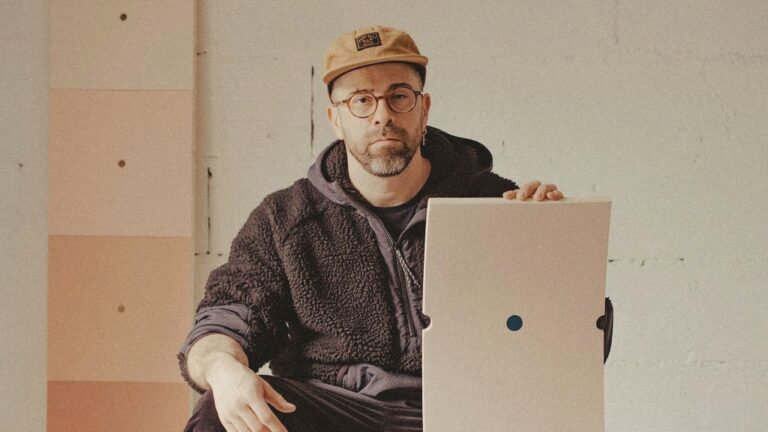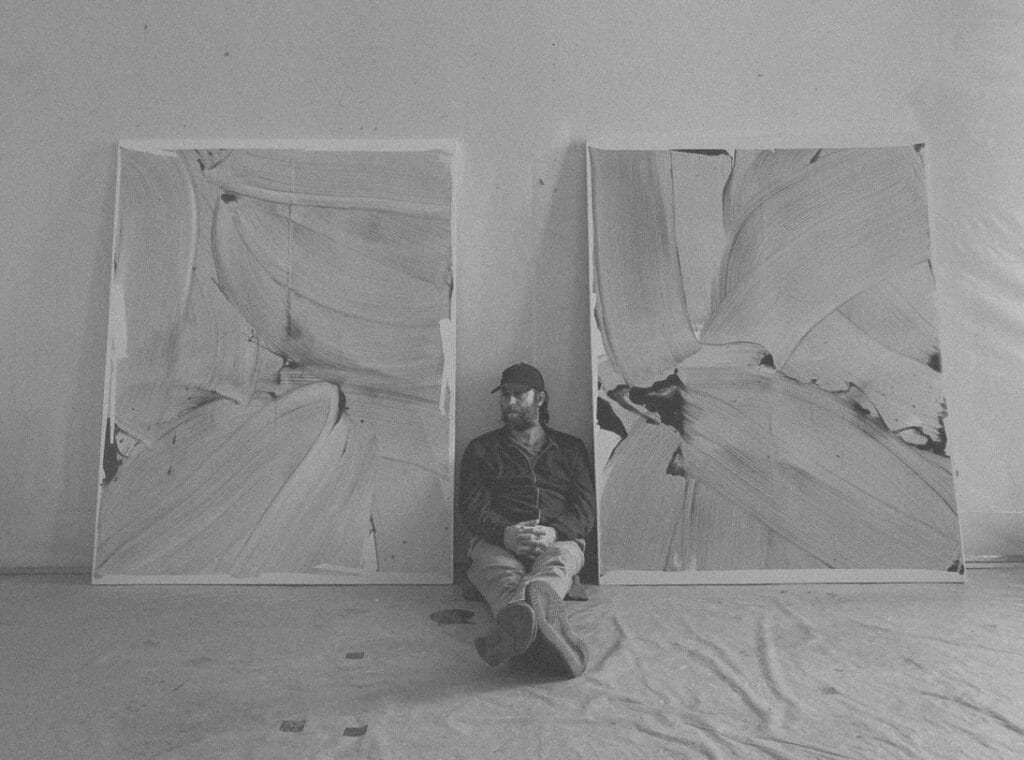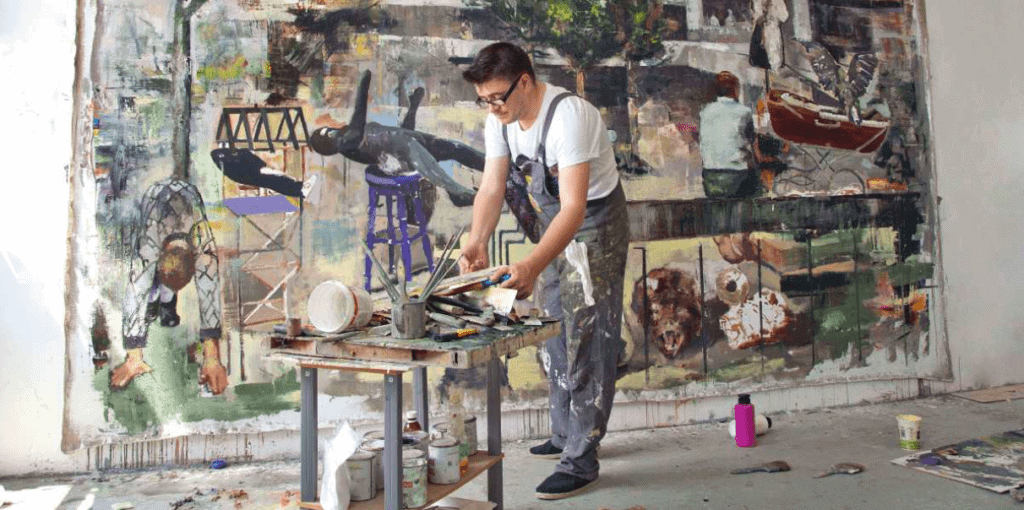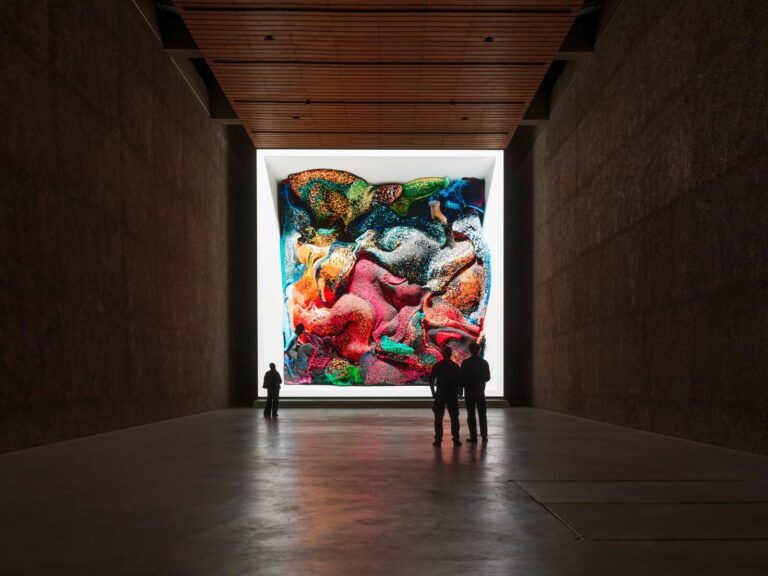
A Conversation with Alejandro Javaloyas
A Studio Visit During the La BIBI Residency
In our extensive take on the top 30 best art cities in the world, we identified art cities as geographical entities with a large population and thus a large sales market, a high concentration of high-end art galleries in a specific area, the presence of renowned institutions and art academies or universities, a prestigious international appeal, where art preferably has a prominent place in the DNA and history of the city, resulting in a strong affinity in public opinion for the artists where visiting and acquiring art comes natural. As a result, there is no doubt that living and working in a major art city can be tremendously beneficial for an artist’s career. You’re located close to numerous art collectors, galleries, and other artists, making it easy to network almost daily. Becoming pertinent in the art scene will naturally result in more exposure. And when the work is good, it will also result in more opportunities.
Even more, art cities such as New York City are described as the Holy Land of the art world, where the top 1% of the most influential institutions are based. 83% of all collectors are based in the United States of America and Europe, and 50% of all art galleries are found in just three countries—the United States of America (34%), Germany (12%), and the United Kingdom (10%)—with over 20% of the art galleries located in just five different cities, including all the most prestigious galleries—New York (6%), London (5%), Berlin (4%), Paris (3%), and Los Angeles (3%).1 Studies have also shown that when exhibiting outside of significant art hubs, artists seem to get stuck in an isolated when exhibiting locally in areas with little to no ties or exposure to other art world centers with no more than 0.05% of artists who began exhibiting at low-prestige venues making it to the very top 1%. By doing so, the artists in question reach their career’s ceiling prematurely.2
Considering these statistics, one might wonder how it is possible to succeed as an artist if you cannot move to a big city. If moving is not an option for you due to your family, financial situation, or disability, do not despair. You could move to a big city to improve your chances of success, but you don’t have to. The following ten reasons or ways to succeed when living outside these big city centers can empower you to pursue the professional art career you dream of without abandoning your current environment—or even convince the artists living inside a major art city to move to a small rural hamlet.
Please note how these statistics discuss exhibitions or exhibition venues and not necessarily studios or homes. Exhibiting in these cities can indeed be tremendously beneficial for your art career. However, this does not mean that we actually have to move to those cities. Numerous artists live and work outside big city centers and are exhibiting in various big cities across the globe—a combination with perhaps more advantages than disadvantages.
In the 21st century, numerous strategies exist to achieve this combination, as we’ll illustrate and argue below. Please note how we can combine several benefits of working outside a major city while simultaneously trying to have as many of the advantages of major art cities remotely.
Let’s start by addressing the most prominent and best-known advantage of not moving to a major art city: the living costs. Major art cities are crowded and cramped, resulting in tremendously high rent prices—both your apartment and if you would like to have a couple of square meters of studio space. The financial pressure to make rent and to be able to cover the overall living costs can make the life of an artist tremendously stressful and mentally drowning.
Financial pressure is one of the worst things for your artistic development, but also for your career, as you are being forced to pursue some short-term results with your art, which will prevent you from following the right career path for adequate long-term success as an artist—most often in vain. This financial risk is the ubiquitous sword of Damocles, hovering above the heads of the artists moving to a big city to pursue a career that comes without any guarantees for success. Avoiding this financial pressure is a tremendous advantage artists have when living outside a major art city—so don’t take this for granted.
By doing so, you should aim to create an excellent work-life-art balance. For now, a job that pays the bills—the quality of life, living in a pleasant and affordable place and having enough time, energy, and resources left to work on your art. A good work-life-art balance is gold. Don’t be hasty to make it, because then it will never happen. There are no shortcuts, and it will take time to build something that lasts. Don’t be in it to rush it; be in it to stay.
The quality of life and life as an artist differs greatly in big cities and small rural towns. Whereas it might be a lot more difficult to network and interact with a vibrant art scene, the production aspect of being an artist is arguably easier in an unknown small town than in a place where everyone wants to be and is, and everyone needs to do things all the time.
The big city life is not for everyone. It can be very hectic and distracting. In a big city, you go out more often, which costs money, time, and energy. It is difficult to own a car or van because of the financial pressure and because it often does not make any sense in a big city where parking is scarce, and the roads are clogged, which is not only inconvenient for the transportation of your pieces or materials but also results in a longer commute to work, which once more takes time, money, and energy.
When there is an abundance of space or small, affordable industrial buildings, having that big, bright studio all artists dream of is very plausible—especially when you’re starting to make some money with your art. And make no mistake, having a good studio is essential for your career as an artist. Not only will it enable you to create bigger or more complex works, but it can also result in a more efficient studio dynamic where everything has its place. A place to stretch the canvases, a place to prime the canvases, a place to paint the picture, a place to pack the painting, and a place to store—instead of having to do all these things in the very same room, making it a logistical hell.
Furthermore, it will also improve your credibility as an artist. You can photograph and document your work in process in a high-end manner, share stunning studio views on social media and your website, or invite collectors or gallerists to a studio that can convince them of your work and budding career. Time and space are essential for artists, and you’re more likely to find them outside a big city.

You’re less likely to drown when swimming in a smaller pool of artists. We might have fewer art galleries and prestigious venues in small to medium-sized cities, but they are much easier to map, navigate, and enter. When you are a small fish in a big pond such as New York City, despite the number of art galleries, the competition is vast and often overwhelming.
As a result, it is a great strategy when living outside a major art city to find a smaller art scene nearby where you target to make your first steps and experiences as an artist. Small art cities consist of smaller social circles. As a result, it is easier to get to know everyone and to be seen by everyone. By doing so, there is excellent social and artistic mobility. With just two to three contacts, you can get in touch and enter the entire art scene.
Because of the lower competition and greater social mobility, the communities can be very close-knit, where artists connect easily with others to create an environment of collaboration and support in which a small community can grow together. A great example is how the Cluj art scene in Romania got together and became a haven of international success and a vibrant art hub. Think of the power of affordable studio environments where artists come together—which is often much easier to achieve than in big cities, as the smaller towns support culture, art, and artists by providing funding or supporting affordable studio accommodation.
These types of community-building initiatives can be tremendously powerful in the long run. If we only need two to three good contacts to enter the entire network, a supportive artist community is the place to go to achieve this. Please note that it will be essential to implement industry-accepted networking strategies in this process, in which we do not impose ourselves as an artist on others, begging for support, exhibitions, or representation. Support the local art scene by visiting, promoting, and connecting with it. This costs you nothing at all, is great fun, and you will be a figure that is well-known and welcome everywhere.
Via this approach and when presenting you in the right way, inevitably people from that network will return the favor and gather an interest in you and your work. And from here on, your career may actually start with some first relevant exhibitions at local, entry-level venues.

Even though Quantifying Success and Reputation in Art argues that the first shows are crucial for an artist’s career and that we can predict the potential success from the first 5 to 10 shows based on the reputation of the venues in question, with just 0.05% of artists starting at low-prestige venues making it to the very top 1%. However, this does not mean you should avoid early experiences at less established venues or cities—a relevant statistical finding, however, with a luring threat of being misinterpreted.
First and foremost, the first ten shows do not mean that your first two to three shows must be in a big city. So you don’t have to move to New York just yet. In a sense, the statistic is very self-explanatory; starting at high-level venues makes you more likely to stay there than vice versa. But, of course, this is easier said than done and is a statistical finding and not actionable advice, as there are more low-value venues than high-value venues, and there are more artists than venues in general. And perhaps most importantly, if you don’t make it to the top 1% of artist superstars, that doesn’t mean you have failed as an artist. Research has also shown that the top 10% earn between $25,000 and $100,000, exhibiting at exciting emerging art galleries and several relevant institutions. It is safe to say that this statistic is a more realistic and encouraging goal to pursue.
Yes, the ideal career path as an artist is to be rich, live in the States of Western Europe, be able to move to a significant art city with no financial pressure, be accepted by a prestigious art university, make it to the graduation show after four to five years being taught by great professors and tutors, being a standout during that graduation show, and being picked up by a high-value art gallery right from the start. However, this already excludes over 99% of the artist population.
But, to be honest, that’s all right. There will always be people in better circumstances, and there will also be people in worse circumstances. Don’t let this bring you down. Take advantage of the opportunities you have. Use the lower competition and greater social mobility to get started via those entry-level venues. Gather your first exhibiting experiences while aspiring to achieve the level of that top 1%. Behave as a top-notch artist, but start humble. Go for art opportunities such as grants, residencies, shows at local institutions, or other open calls that would be too competitive in the big cities and try to achieve everything you can achieve in that city.
Numerous established artists first became influential locally before they entered the international stage. In this process, allow yourself the time to prepare yourself, your art, and your career or resume to be ready for that international stage. Only very few people will make no mistakes in the first few years of their career, and I am convinced it is better to make them as early as possible and somewhere where there is less exposure instead of at a major venue.
Your first few local successes and experiences can set you up to have the right profile, experience, and credibility as an artist. Think of the key indicators of the art world for a promising artist; an institutional show, being featured in a public collection, being covered in a magazine, et cetera. All these things are much easier to achieve locally than in a big city. When the time is right, you can connect with the cultural center or local museum to organize a solo exhibition. As a thank you, you could gift an artwork to the city collection, which is another great entry for your resume. In this process, a local art magazine could do an extensive interview on the occasion of the exhibition. Relevant steps that are very achievable in small cities.
Use these successes as stepping stones. With this resume, experience, and track record of exhibitions and sales, we have a solid and professional profile. In our nice and large studio, we have worked efficiently and developed consistently without the external pressure of Damocles’ financial sword due to a good work-life-art balance. Now, we can look any artist, collector, or gallery director in the eye, confident of our work and career. We can bring something to the table, and we will be taken seriously by the big city entities and individuals thanks to our local successes. Now, it is time to pursue our ultimate goal: working in our small town but exhibiting abroad in a major art city.
It is not easy—if not impossible—to predict where our next exhibition invite will come from. But directly or indirectly, it always comes from your network, and we can decide where to build our network. When the time is right, and you have built a decent resume and track record locally, you can start to target a different geographical area for your network—for instance, a major art city—without having to move permanently to that area.
Use Instagram to connect with artists working and residing specifically in that targeted city. Apply to open calls taking place in that city. Make sure to follow the top galleries and a series of entry-level galleries that are a good fit for you. Follow the art magazines of that city and the individual authors writing for those magazines. Once more, do not impose yourself as an artist to force their interest. Instead, be an artist interested in them and invest time and effort in establishing valuable online connections. Try to visit the city at least once a year to cultivate those contacts in real life. Participate in the most important events in that city.
For more information and strategies on networking for artists and long-term strategies to increase your chances for success in the highest realms of the art world, make sure to consult our overview page with advice for artists next.
Main image: Katherina Olschbaur in her LA Studio
Notes:
Last Updated on April 9, 2024

A Studio Visit During the La BIBI Residency

A Reasoned Anthology